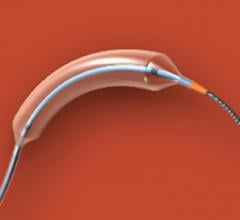May 4, 2012 - A new balloon catheter system could advance the endovascular approach to treating obstructed arteries in the leg, offering an alternative to surgical revascularization. Peripheral artery disease affects about 12 to 14 percent of the general population. Revascularization can be achieved through bypass surgery or a number of minimally invasive endovascular techniques that seek to reduce or eliminate symptoms of reduced blood flow by improving tissue perfusion. Chronic total occlusions of the superficial femoral artery and popliteal artery, some of the most difficult lesions to recanalize with conventional guidewire techniques, were treated with this new system.
This first-in-man experience of the Enabler-P Balloon Catheter System is reported in the current issue of the Journal of Endovascular Therapy. The Enabler-P Balloon Catheter System features a unique balloon-anchoring mechanism and an automated balloon inflation device that allows steady, controlled guidewire advancement by the operator through an occlusion. The new system incorporates increased top force and better pushability of a standard guidewire.
Thirty-seven patients with a variety of occlusions, including heavily calcified, long and fibrotic lesions, participated in the study. A successful procedure was achieved in 86 percent. The average time to successfully navigate the occlusion was 5.3 minutes. Physicians participating in the study reported success in maintaining positioning of the guidewire in the lumen of the blood vessel, even in curvilinear and other challenging areas.
The authors of a commentary about this article welcome this test of new endovascular techniques and tools. Although an increasing
number of facilities favor first trying an endovascular approach to obstructed arteries in the leg, there is a lack of adequately designed clinical studies helping to establish these techniques. The authors note that this new system may offer new possibilities and change attitudes toward lower limb revascularization in the setting of critical limb ischemia.
For more information: www.jevtonline.org/toc/enth/19/2
News | May 04, 2012


 June 13, 2024
June 13, 2024 









